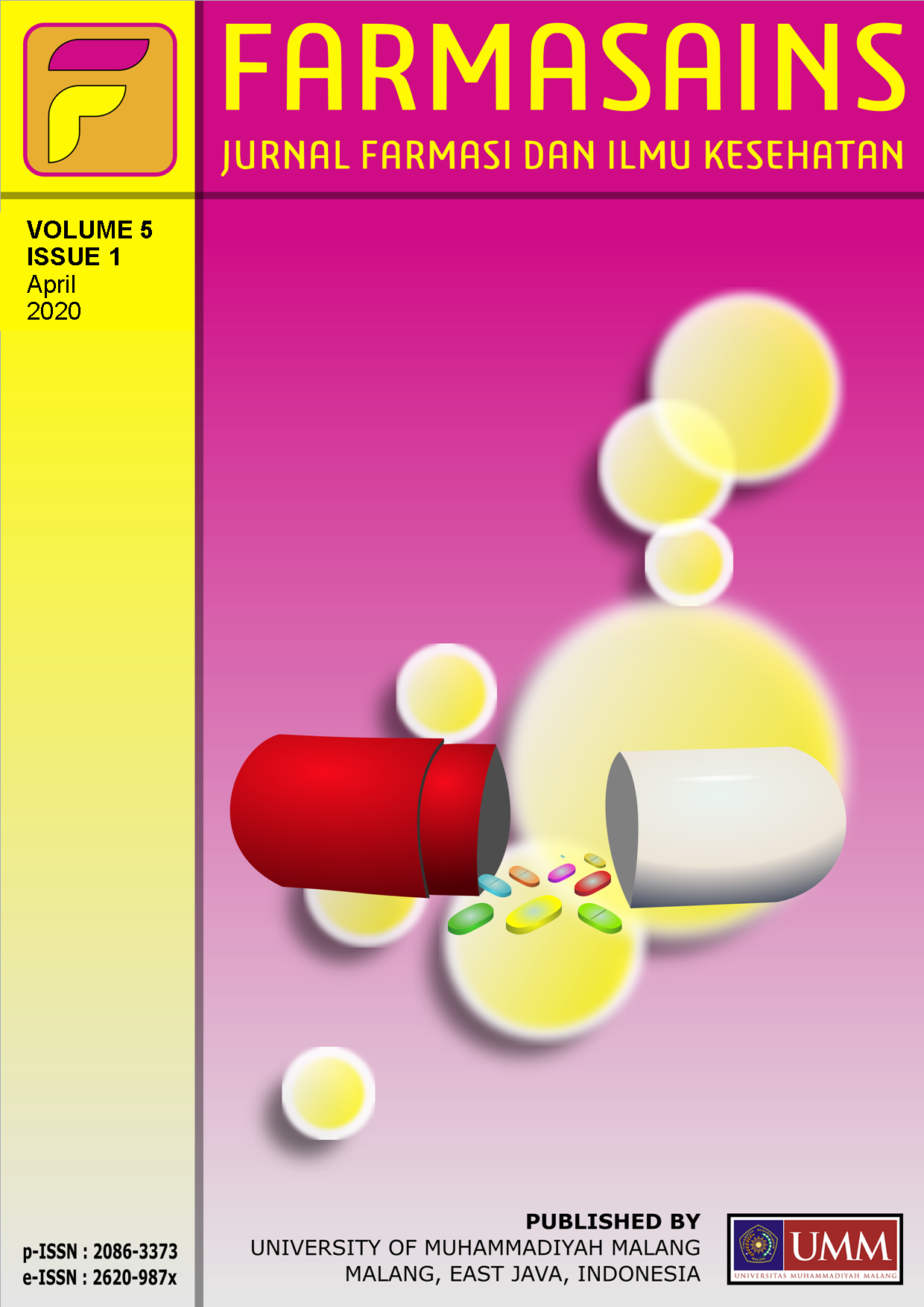Evaluation of variations in the response of hypertensive patients in the outpatient installation of the UPT Puskesmas, Babat Lamongan District
DOI:
https://doi.org/10.22219/farmasains.v5i1.13956Keywords:
Hypertension, Variation of response, Antihypertensives, Blood pressureAbstract
Hypertension has long been a health problem that can have severe impacts on society. Measurement of blood pressure is one of the determinants of antihypertensive treatment's success, which can be seen from the reduction in the patient's blood pressure towards achieving the target blood pressure. Less than optimal blood pressure control is the most common risk factor for CVD and cerebrovascular disease. The role of the selection of antihypertensive therapy in each patient's condition is individual. Each patient will vary in response to various types of antihypertensive treatment. The research design carried out was retrospective descriptive with the observation of variations in answer to the use of antihypertensives in outpatient hypertension patients at the Babat Health Center with an examination period from January to December 2019. The study was divided into two groups, namely the positive and negative response groups. Patient characteristics data (age, sex, and treatment regimen) were statistically tested with the chi-square test to see whether there was a difference in eating or not between the two groups. It is said a positive response if the patient's blood pressure has decreased after three months of using antihypertensives. Harmful if after three months of antihypertensive use, there is no change in blood pressure or increased blood pressure. The evaluation was carried out on patients with negative responses, what factors were the causes. The results of patient characteristics, p> 0.05, were not significant differences between the two groups. There are variations in the negative response caused by the therapy regimen that is not optimal, lifestyle, and metabolism of antihypertensive drugs that are different for each individual.
Downloads
References
Aronow, W. S., & Shamliyan, T. A. (2018). Blood pressure targets for hypertension in patients with type 2 diabetes. Annals of translational medicine, 6(11). Doi:10.21037/atm.2018.04.36
Bhardwaj, S., Balgir, P. P., & Goel, R. K. (2015). Pharmacogenomics and personalized management of hypertension. Journal of Critical Reviews, 2(2), 1-6.
Carey, R. M., & Whelton, P. K. (2018). Prevention, detection, evaluation, and management of high blood pressure in adults: synopsis of the 2017 American College of Cardiology/American Heart Association Hypertension Guideline. Annals of internal medicine, 168(5), 351-358. Doi:10.7326/M17-3203
De Boer, I. H., Bangalore, S., Benetos, A., Davis, A. M., Michos, E. D., Muntner, P., ... & Bakris, G. (2017). Diabetes and hypertension: a position statement by the American Diabetes Association. Diabetes Care, 40(9), 1273-1284. doi:10.2337/dci17-0026
Höcht, C. (2013). Blood pressure variability: prognostic value and therapeutic implications. International Scholarly Research Notices, 2013, i398485. Doi:10.5402/2013/398485
James, P. A., Oparil, S., Carter, B. L., Cushman, W. C., Dennison-Himmelfarb, C., Handler, J., ... & Smith, S. C. (2014). 2014 evidence-based guideline for the management of high blood pressure in adults: report from the panel members appointed to the Eighth Joint National Committee (JNC 8). Jama, 311(5), 507-520. Doi:10.1001/jama.2013.284427
Lionakis, N., Mendrinos, D., Sanidas, E., Favatas, G., & Georgopoulou, M. (2012). Hypertension in the elderly. World journal of cardiology, 4(5), 135-147. doi:10.4330/wjc.v4.i5.135
Margolis, K. L., O’Connor, P. J., Morgan, T. M., Buse, J. B., Cohen, R. M., Cushman, W. C., ... & Lipkin, E. W. (2014). Outcomes of combined cardiovascular risk factor management strategies in type 2 diabetes: the ACCORD randomized trial. Diabetes care, 37(6), 1721-1728. doi:10.2337/dc13-2334
Ong, K. L., Tso, A. W., Lam, K. S., & Cheung, B. M. (2008). Gender difference in blood pressure control and cardiovascular risk factors in Americans with diagnosed hypertension. Hypertension, 51(4), 1142-1148. Doi:10.1161/HYPERTENSIONAHA.107.105205
Parati, G., Ochoa, J. E., Lombardi, C., & Bilo, G. (2013). Assessment and management of blood-pressure variability. Nature Reviews Cardiology, 10(3), 143. Doi:10.1038/nrcardio.2013.1
Setia, S., Subramaniam, K., Tay, J. C., & Teo, B. W. (2017). Hypertension and blood pressure variability management practices among physicians in Singapore. Vascular Health and Risk Management, 13, 275. Doi:10.2147/VHRM.S138694
Stevens, S. L., Wood, S., Koshiaris, C., Law, K., Glasziou, P., Stevens, R. J., & McManus, R. J. (2016). Blood pressure variability and cardiovascular disease: systematic review and meta-analysis. bmj, 354, i4098. doi:10.1136/bmj.i4098
Ulfa, N. M., Prasetya, R. A., & Adelia, L. (2018). Profil Penurunan Tekanan Darah pada Terapi Obat Antihipertensi Golongan CCB Dihidropiridin Antara Amlodipin Dibandingkan Nifedipin Oral Osmotik (Studi Dilakukan di Poli Penyakit Dalam RS Bhayangkara Porong). Journal of Pharmacy and Science, 3(1), 34-39.
Webb, A. J., Fischer, U., Mehta, Z., & Rothwell, P. M. (2010). Effects of antihypertensive-drug class on interindividual variation in blood pressure and risk of stroke: a systematic review and meta-analysis. The Lancet, 375(9718), 906-915. Doi:10.1016/S0140-6736(10)60235-8
Downloads
Published
How to Cite
Issue
Section
License
Authors who publish with this journal agree to the following terms:
a. Authors retain copyright and grant the journal right of first publication with the work simultaneously licensed under a Creative Commons Attribution License that allows others to share the work with an acknowledgement of the work's authorship and initial publication in this journal.
b. Authors are able to enter into separate, additional contractual arrangements for the non-exclusive distribution of the journal's published version of the work (e.g., post it to an institutional repository or publish it in a book), with an acknowledgement of its initial publication in this journal.
c. Authors are permitted and encouraged to post their work online (e.g., in institutional repositories or on their website) prior to and during the submission process, as it can lead to productive exchanges, as well as earlier and greater citation of published work (See The Effect of Open Access).













